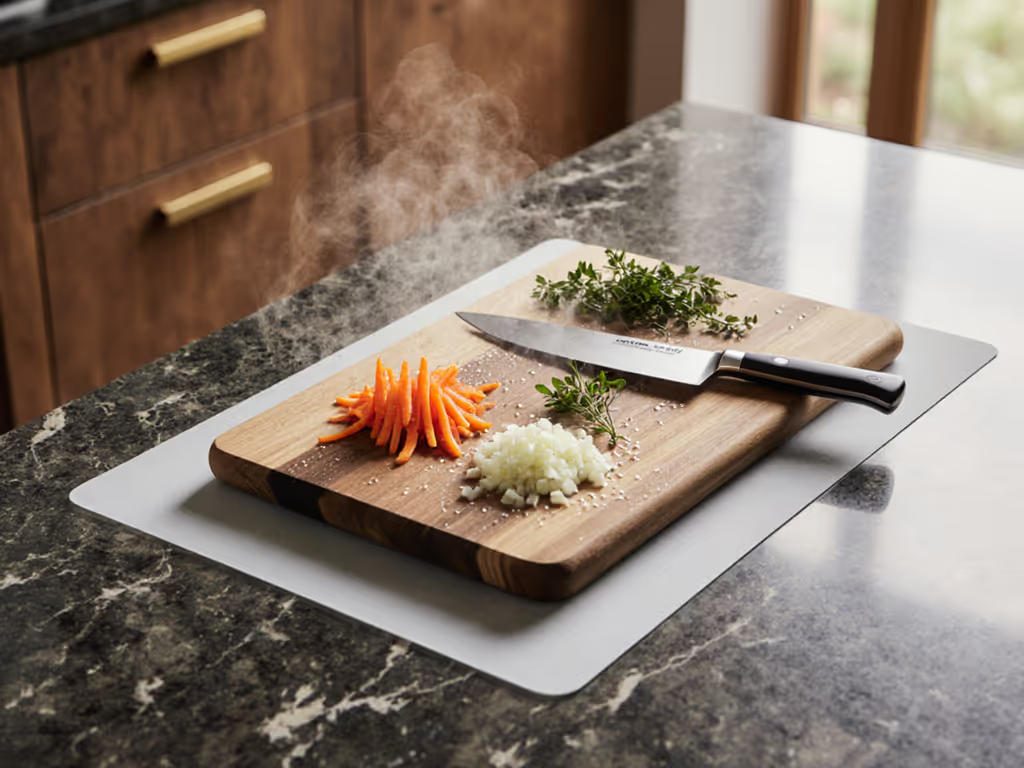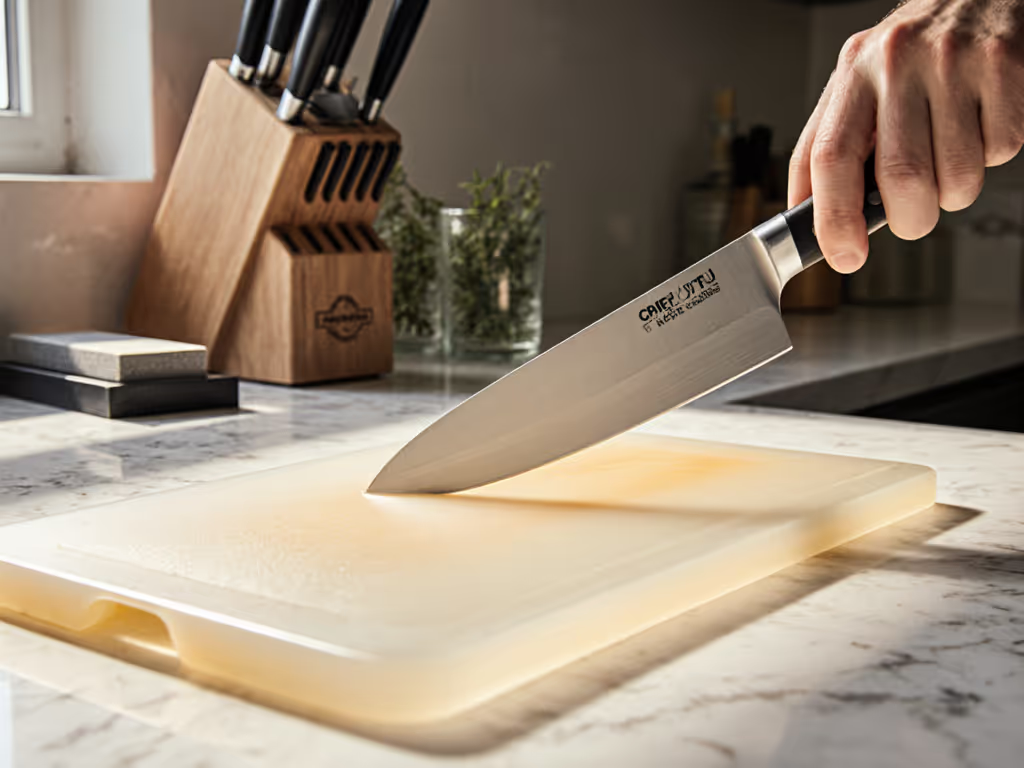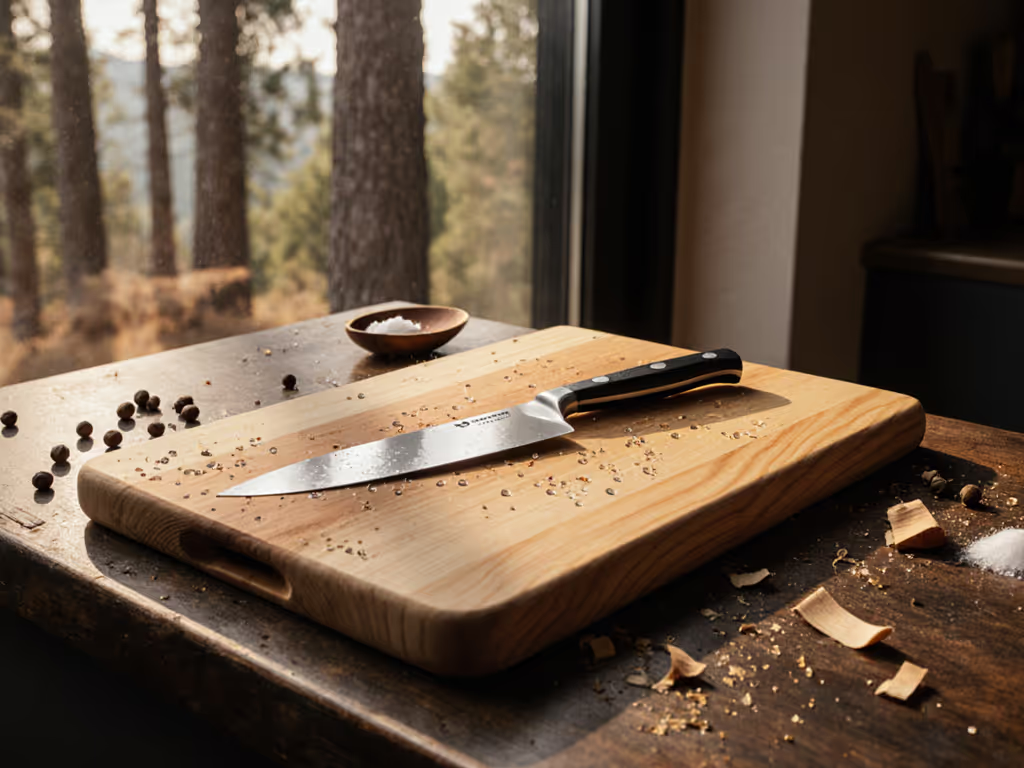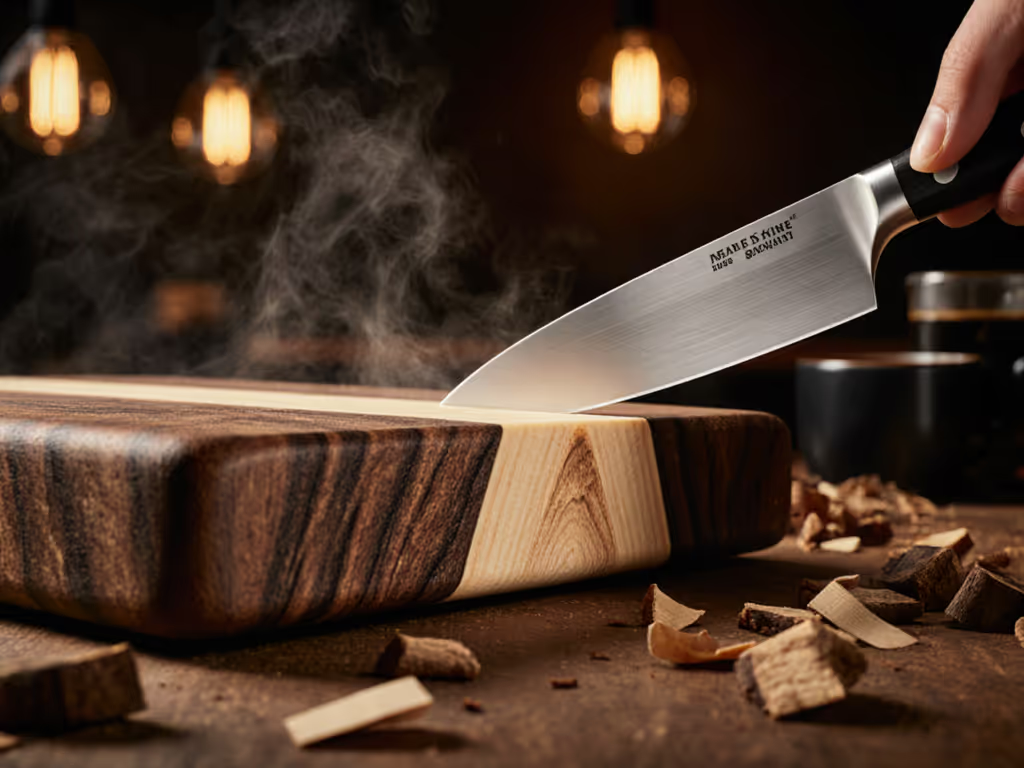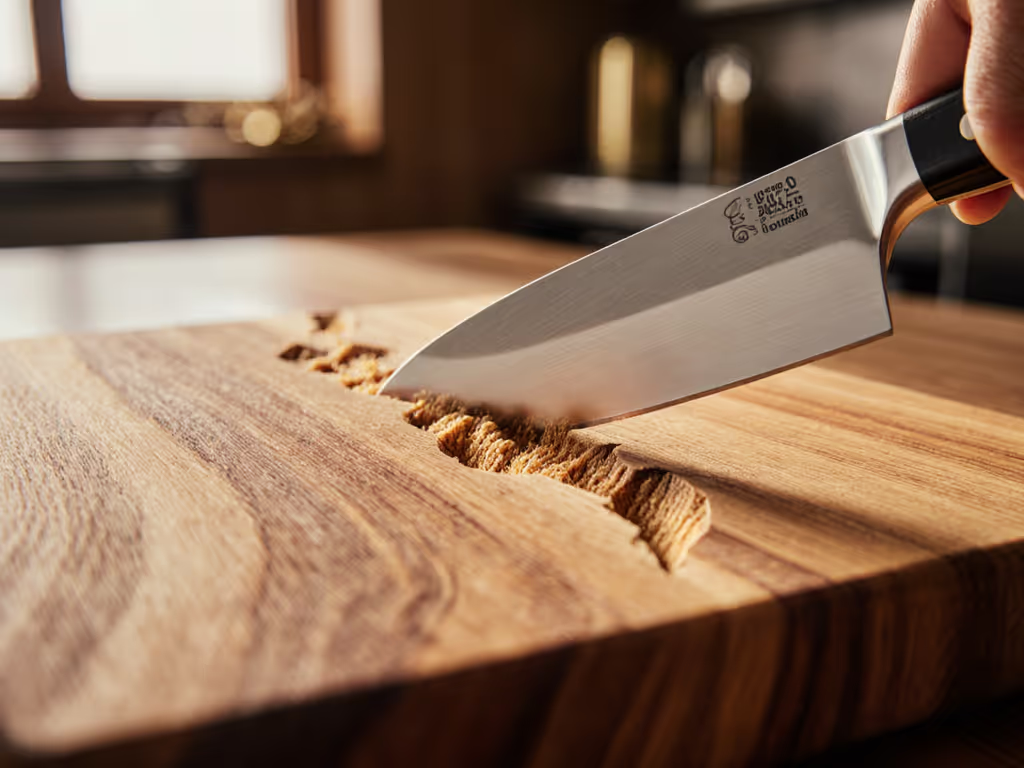
Plastic vs Wood Cutting Boards: Gentle on Knives Guide
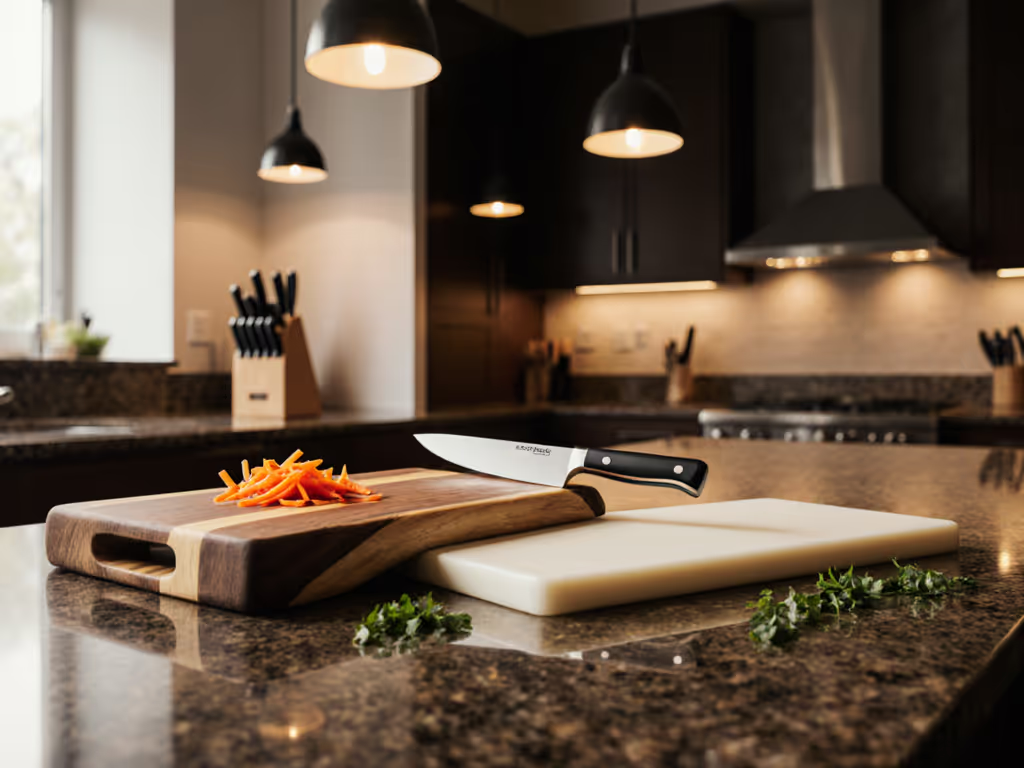
When you're weighing plastic vs wood cutting boards, you're not just choosing a surface, you're selecting the foundation for every slice, dice, and mince. The best material cutting boards share one unspoken truth: they cradle your knife edge instead of fighting it. I've seen cooks freeze mid-chop, knuckles white, because their board thwacked like a drum instead of giving softly under the blade. Let's fix that.
Why Your Board Choice Is a Silent Partner in Every Cut
Most cooks obsess over knife steel but overlook the stage it performs on. A harsh board surface (like glass or brittle plastic) micro-chips edges. It's not magic, it's physics. Every rebound vibrates up your wrist, tightening your grip until your hand drags against the handle. Suddenly, you're sawing instead of gliding. Comfort and feedback drive better cuts and fewer mistakes, that's non-negotiable in my kitchen. Remember that neighbor I taught who flinched at every chop? Her story isn't rare.
Step 1: Decode Your Knife's Needs (Not the Hype)
Your knife's temperament depends on two things: steel hardness and your grip style. German knives (like Wüsthofs) thrive on boards with subtle give, they're forgiving on slightly harder surfaces. Japanese high-carbon blades (think Global or Masamoto) demand plush feedback to avoid micro-dulling. Here's how to test:
- The Tap Test: Gently tap your knife spine on the board. Wood should absorb the thud into a muffled shhh. Plastic often rings hollow or cracks back at you. If it stings your knuckles, walk away.
- The Drag Check: Press the knife tip down, then drag it 2 inches. On ideal boards, the blade should slide without catching. If it jumps or sticks, that surface will fray your edge over time.
Comfort builds confidence; confidence keeps edges where they belong.
What About Bamboo or Marble?
Bamboo cutting boards seem eco-friendly but hide silica (a natural abrasive). They feel smooth until you slice radishes, then they scratch like sandpaper. Skip them for delicate blades. Marble cutting boards? A trap for beginners. That cool, slick surface makes knives skid toward fingers. Save marble for cheese or pastry, never for chopping. The best cutting boards material for daily prep is whichever stays planted while your knife flows.
Step 2: Run the Stability Check (No Fancy Gear Needed)
A sliding board is a danger zone. But slippage isn't about the board alone, it's the interface between board, counter, and motion. My fix takes 10 seconds:
- Wet a kitchen towel until damp (not dripping)
- Lay it flat on your counter
- Place your board on top
This is the damp-towel test. If the board still drags sideways when you chop onions, the towel's too wet or the board's bottom isn't flat. Wood often wins here, its natural grain grips better than slick plastic when damp. Pro tip: Rotate boards quarterly. The side facing away from your sink wears evenly, staying flatter longer.
Step 3: Match Your Board to Your Prep Rhythm
Forget "best overall." Your best material cutting boards depend on what you cook and how you move. Here's my workflow hack:
| Task | Ideal Board | Why It Works |
|---|---|---|
| Raw proteins | HDPE plastic (1.5"+) | Deep grooves catch juices; non-porous surface washes clean in sink (no stale smells) |
| Bread/fruit | End-grain wood | Gives kindly to serrated edges; self-healing surface won't scar |
| Daily veg | Edge-grain wood | Smooth ride for precision cuts; quieter thump reduces hand fatigue |
| Quick tasks | Rubber mat + tray | Sticks to counter; juice tray slides under board for mess-free transfers |
Is plastic cutting boards safe? Yes, but only if you replace them when deeply scarred. Bacteria nest in those grooves. Wood's natural tannins absorb moisture and kill microbes (per Wisconsin food safety studies), but both need immediate washing. Never use one board for everything. For a deeper dive into cross-contamination prevention and cleaning methods, see our cutting board food safety guide.
The Noise Factor: Why Quiet Matters
That relentless thwack of plastic isn't just annoying, it's a warning sign. Hard impacts fatigue your wrist in 20 minutes, making you grip tighter until mistakes happen. Wood absorbs 3x more vibration (per University of Minnesota knife dynamics research), so chops feel cushioned. Try this: Close your eyes while chopping celery. If you hear repeated cracks, your board's too rigid. A gentle shushing sound means your edge is gliding, not crashing.
Your Maintenance Map (No Overcomplication)
Wood boards aren't high maintenance, they're rhythm maintained:
- After each use: Scrape, hand-wash, dry upright
- Weekly: Rub with food-safe mineral oil (not olive oil, it turns rancid)
- When pale/dry: Sand lightly with 220-grit, re-oil
Plastic boards need simpler but stricter care:
- After raw meat: Soak in 1:10 bleach/water mix for 2 minutes
- When stained: Scrub with baking soda paste (never bleach, it makes the surface brittle)
- Retire when: Scratches hold water droplets (bacteria hideouts)
Never use the dishwasher either. Heat warps wood; plastic softens then hardens into a microplastic-release trap (per recent NDSU studies).
The Real Winner: Your Confidence at the Cutting Board
Back to that neighbor: swapping her glass board for a damp-toweled maple slab didn't just soften the thwack, it slowed her tempo. Her grip steadied because the board stuck. Within a week, she sliced tomatoes without skidding the edge. That's the power of plastic vs wood cutting boards done right: the surface disappears, leaving only you and your knife in flow.
The best material cutting boards won't shout their value. They'll feel like an extension of your hand, quiet, planted, and alive with subtle feedback. Start with one dedicated board (wood for veg, HDPE for proteins), run the damp-towel test, and listen to your wrist. When your chops sound soft and sure, you've found your match.
Keep Exploring Your Cutting Rhythm
Still curious how board thickness affects edge retention? Or how to test modern composites like paper-resin blends? I'm drafting a deep dive into knife/board physics, subscribe below for quiet chop secrets that keep your edges gleaming. Because in the end, your board isn't just 'safe.' It's the silent coach whispering you've got this with every slice.

